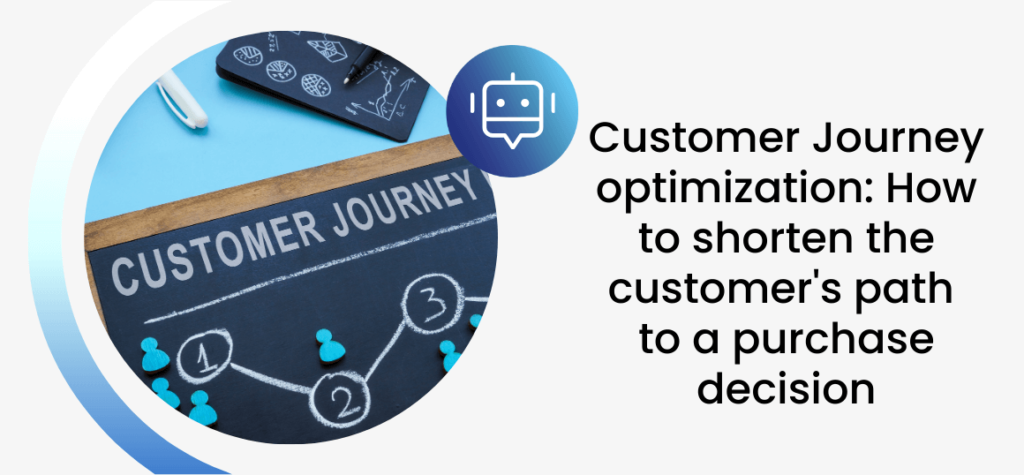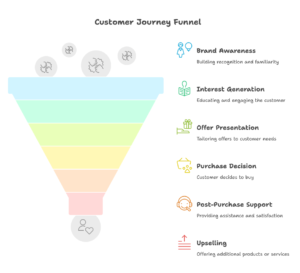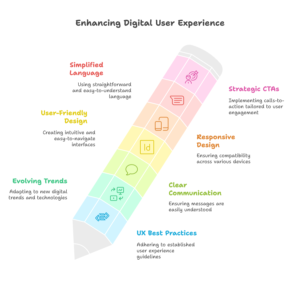Customer Journey optimization: How to shorten the customer’s path to a purchase decision

Customer Journey optimization: how to shorten the path to purchase
Every business owner should care about guiding customers along a carefully designed buying journey. This is the foundation of a sales funnel strategy, where consumers first become aware of the brand and then gradually progress toward using its services. The length of the customer journey depends on factors such as the industry and purchase motivations. In this article, our experts provide key insights into what the Customer Journey is and how to optimize the purchasing process.
What is a Customer Journey Map?
Let’s start with a clear definition. A Customer Journey Map is a set of stages that follow one another in a defined and carefully planned sequence. These stages outline the level of interaction a potential customer has with the brand across different touchpoints. Each stage of the Customer Journey should be designed to gradually build interest in the company and prepare the customer to make a purchasing decision. Of course, the journey doesn’t end at the point of sale. The post-purchase phases—customer service, building loyalty, and encouraging repeat purchases—are just as important.
A simple breakdown of the Customer Journey Map includes stages such as:
- first contact with the company and building brand awareness,
- educating the customer and increasing interest in the offer,
- presenting an offer tailored to the customer’s needs,
- the customer’s purchasing decision,
- post-purchase support,
- upselling additional products or services.

The detailed marketing and purchasing process may vary depending on the customer type and industry, which is why it should always be approached individually. Building a journey map should be based on a deep understanding of the target audience’s needs and expectations. The sector also influences how long a customer’s journey typically lasts.
Why is it worth using the Customer Journey in the sales process?
There are several reasons why marketing and sales professionals should accurately identify customer needs, analyze the Customer Journey Map, and optimize it. Why should you implement such a journey in your business? Above all, it’s a method to gain a deeper understanding of customer needs. It’s the key to crafting tailored offers and designing communication strategies specific to your target audience. This translates into higher customer satisfaction, leading to quicker purchasing decisions and greater willingness to return or recommend your services or products to friends and family.
A carefully planned and optimized buying journey also increases the efficiency of how resources and financial means are used. In practice, this results in improved conversion rates and lower customer acquisition costs. At the same time, customers tend to spend more, raising the average order value. Throughout the entire process, customer experience plays a crucial role. The better the experience, the higher the chances of building lasting customer relationships and a loyal client base that will return regularly. These are the key reasons why investing time and resources into analyzing and implementing a Customer Journey Map is well worth the effort.
Ways to optimize the Customer Journey and shorten the path to purchase
Optimizing the Customer Journey Map and its individual stages has a direct impact on business profitability. Undoubtedly, every entrepreneur should pay close attention to this. It’s also worth exploring how AI can help increase online store sales. Below are some practical ways to shorten the customer journey while improving its overall effectiveness:
Reduce the steps to purchase to an absolute minimum
One of the common mistakes marketers and sales teams make is overcomplicating the buying journey. Every stage (customer action) should be well-planned and purposefully placed within the journey map. At the same time, unnecessary steps should be eliminated wherever possible. In short, this includes:
- allowing customers to purchase a product or service without requiring account registration or direct contact (fewer steps to complete the transaction),
- removing redundant forms, redirects, and blocks of text,
- offering simple and secure payment methods (e.g., BLIK, instant bank transfer, credit card payments).
The more actions a customer must take, the more likely they are to abandon the transaction—leading to what are known as “abandoned carts.” Unclear payment procedures, for example, can be a major contributing factor. It’s crucial to regularly review where in the process customers are dropping off (both online and offline) and resolve any problematic areas. This is a straightforward way to optimize and shorten the purchase path to its most efficient form.
Use psychological techniques
One effective way to optimize the customer journey is by using accessible and ethical psychological techniques. That’s why it’s beneficial to incorporate elements of social proof into the sales funnel, such as customer reviews, case studies, or information about the current number of clients. Other psychological tactics used in funnels include expert recommendations, certifications, and creating urgency or scarcity—for example, limited-time offers or low stock levels, which are often used in e-commerce. Of course, these strategies must be applied thoughtfully to avoid overwhelming or alienating the customer and diminishing their satisfaction. That’s why continuous analysis of the customer journey and making necessary adjustments is essential.
UX optimization
When it comes to websites and apps, it’s crucial that they follow UX best practices and adapt to evolving trends. Online communication channels must be clear and easily accessible. At the same time, websites should be user-friendly and responsive, allowing seamless use across all types of devices. Simplifying communication language and highlighting strong calls-to-action (CTAs) is key—encouraging specific interactions such as purchasing a product, scheduling a call, signing up for a webinar, or subscribing to a newsletter. The type of CTA should be tailored to the stage of the customer’s journey and their current engagement with the brand.

Use modern tools
Naturally, optimizing the customer purchase journey also involves leveraging available technological solutions. AI-based tools are becoming increasingly popular. In customer communication, voicebots and chatbots prove highly effective—they can take over portions of the interaction process. They can also be successfully used to build customer relationships, provide education, and boost engagement (e.g., through games, loyalty programs, or post-purchase satisfaction surveys). The potential of these tools in optimizing the Customer Journey is enormous.
There are also dedicated tools available on the market for creating heatmaps that show how users navigate a website and which elements draw the most attention—ultimately influencing sales. One example of such a tool is Hotjar. For analyzing user behavior, trends, and ad conversion rates, it’s worth using platforms like Google Analytics. When it comes to customer service, call center software—such as our Easy CC system—can be extremely helpful. Today’s market also offers tools for automating various other tasks, including collecting feedback and measuring satisfaction (e.g., SurveyMonkey), or CRM systems for managing customer data. It’s worth exploring these options and building a cohesive, comprehensive technology infrastructure to support customers throughout the mapped buying journey.
Building a Customer Journey Map is a continuous process
Has your customer journey been built and implemented successfully? That’s great—but it’s no reason to rest on your laurels. In marketing and sales, building a Customer Journey Map should be an ongoing process. What works today might lose its effectiveness in a few weeks or months. Factors like evolving trends or audience fatigue can influence this. That’s why it’s critical to regularly analyze the journey’s performance—its conversion rate, customer behavior, and competitor strategies. This enables you to make strategic decisions about modifying and optimizing the path to purchase.
Looking for tools to support Customer Journey Map optimization and automate customer communication? Be sure to contact one of our experts. At EasyCall, we’ve been helping companies from various sectors implement modern technologies—including AI solutions—for years. We’ll prepare a tailored offer for you and guide you through the entire process.
